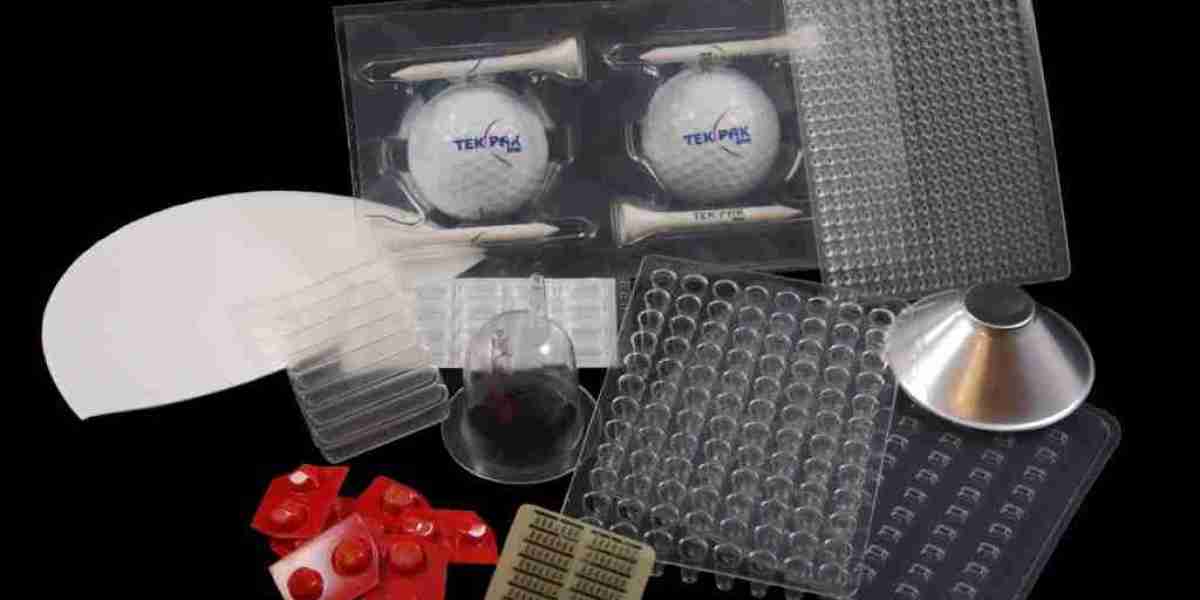In the evolving packaging landscape, functional innovation has emerged as a defining factor in maintaining market relevance. Within the Thermoform Packaging Market, advanced barrier technologies and smart packaging solutions are transforming conventional formats into intelligent, performance-driven tools that offer far more than containment.
Thermoform packaging, traditionally recognized for its structural protection and cost-efficiency, is now being optimized to include advanced capabilities like shelf-life preservation, real-time data monitoring, and consumer interaction enhancements. These changes are especially prominent in the food, pharmaceutical, and electronics industries, where safety, precision, and compliance are non-negotiable.
Barrier Property Advancements: The Core of Product Protection
Barrier properties are essential in protecting sensitive products from external threats such as oxygen, moisture, UV radiation, and microbial contamination. Recent innovations in thermoform packaging have focused on integrating high-barrier materials that extend product shelf life and maintain product integrity.
Modern thermoformed packages now incorporate multilayer films with materials such as EVOH (ethylene vinyl alcohol), PVDC (polyvinylidene chloride), and nylon. These offer:
Superior oxygen and moisture resistance
High aroma retention for food applications
Extended shelf life, minimizing food waste
Stability during sterilization processes for pharmaceuticals
For instance, in ready-to-eat meals, high-barrier PET trays are laminated with EVOH layers to create oxygen-impermeable seals, preventing spoilage and ensuring food safety over extended distribution timelines.
Smart Packaging Integration: Adding Intelligence to Thermoform Formats
Smart packaging refers to materials embedded with technologies that provide functionality beyond traditional protection. In thermoform packaging, these innovations include:
Time-temperature indicators (TTIs) that signal product exposure to temperature abuse
RFID/NFC tags for supply chain tracking and inventory management
QR codes and augmented reality (AR) links for enhanced consumer engagement
These features are being increasingly adopted in perishable food products, medical device kits, and premium consumer electronics. For example, smart diagnostic kits packaged in thermoform trays can include TTIs to validate that the kit has remained within safe handling temperatures during transit.
Pharmaceutical Applications: Precision Meets Protection
Pharmaceuticals benefit immensely from enhanced barrier and smart thermoform packaging. Blister packs made with aluminum-PVC-PVDC laminates now integrate:
Dose-tracking capabilities using printed codes
Tamper-evidence features for patient safety
Moisture control layers for humidity-sensitive tablets
Additionally, pharma manufacturers are adopting thermoform trays with embedded RFID tags that automate batch traceability and compliance documentation. This not only satisfies regulatory requirements but also improves logistics efficiency.
Food Industry Adoption: Freshness and Trust Through Technology
Food manufacturers are integrating smart and barrier-enhanced thermoform packaging in products such as:
Fresh-cut produce
Protein-rich items like poultry and seafood
Dairy and ready-meal segments
Modified atmosphere packaging (MAP) using thermoformed trays has seen high uptake. These packages replace ambient air with inert gases to delay spoilage. When combined with moisture-absorbing pads and gas-barrier films, MAP trays can double or triple shelf life.
Smart labeling, such as freshness sensors that change color when spoilage begins, is gaining popularity in premium food brands, reinforcing consumer trust and reducing returns.
Electronics Packaging: Antistatic and Intelligent Design
In consumer electronics, thermoform packaging must provide not just physical protection, but also:
Electrostatic discharge (ESD) prevention using conductive polymers
Tamper-resistance to ensure warranty integrity
Product authentication tools such as unique QR codes or embedded NFC chips
Tech companies are also leveraging intelligent packaging to combat counterfeiting and enhance unboxing experiences. For example, QR-code-enabled thermoform inserts allow users to verify product authenticity and access instructional content via mobile apps.
Sustainability and Performance: A Joint Innovation Mandate
While integrating smart and barrier functions, packaging developers are also under pressure to maintain sustainability. Efforts are focused on:
Lightweight barrier films that reduce material use without sacrificing protection
Recyclable multilayer structures that meet circular economy standards
Compostable smart labels and indicators developed from natural polymers
Balancing recyclability with performance remains a key innovation challenge. However, breakthroughs like mono-material high-barrier PET trays and water-based conductive inks for smart labels are showing promise.
Market Implications and Commercial Momentum
The commercial benefits of enhanced barrier and smart packaging are numerous:
Reduced spoilage and returns, lowering supply chain costs
Brand differentiation in competitive retail environments
Improved compliance with food safety and pharma regulations
Greater consumer satisfaction through enhanced product transparency and interactivity
Companies investing in R&D and early adoption of these technologies are gaining competitive advantages, particularly in regions with advanced logistics and regulatory expectations such as the EU, Japan, and North America.
Conclusion: Toward Functional, Future-Ready Packaging
The Thermoform Packaging Market is no longer defined solely by structure and cost-efficiency. With the rise of smart features and advanced barrier capabilities, thermoform packaging is evolving into a multifunctional tool that meets the highest standards of safety, compliance, sustainability, and consumer engagement.




